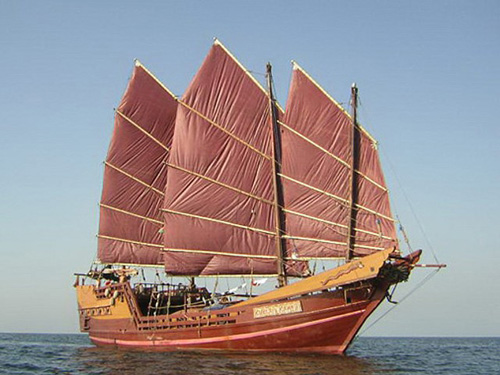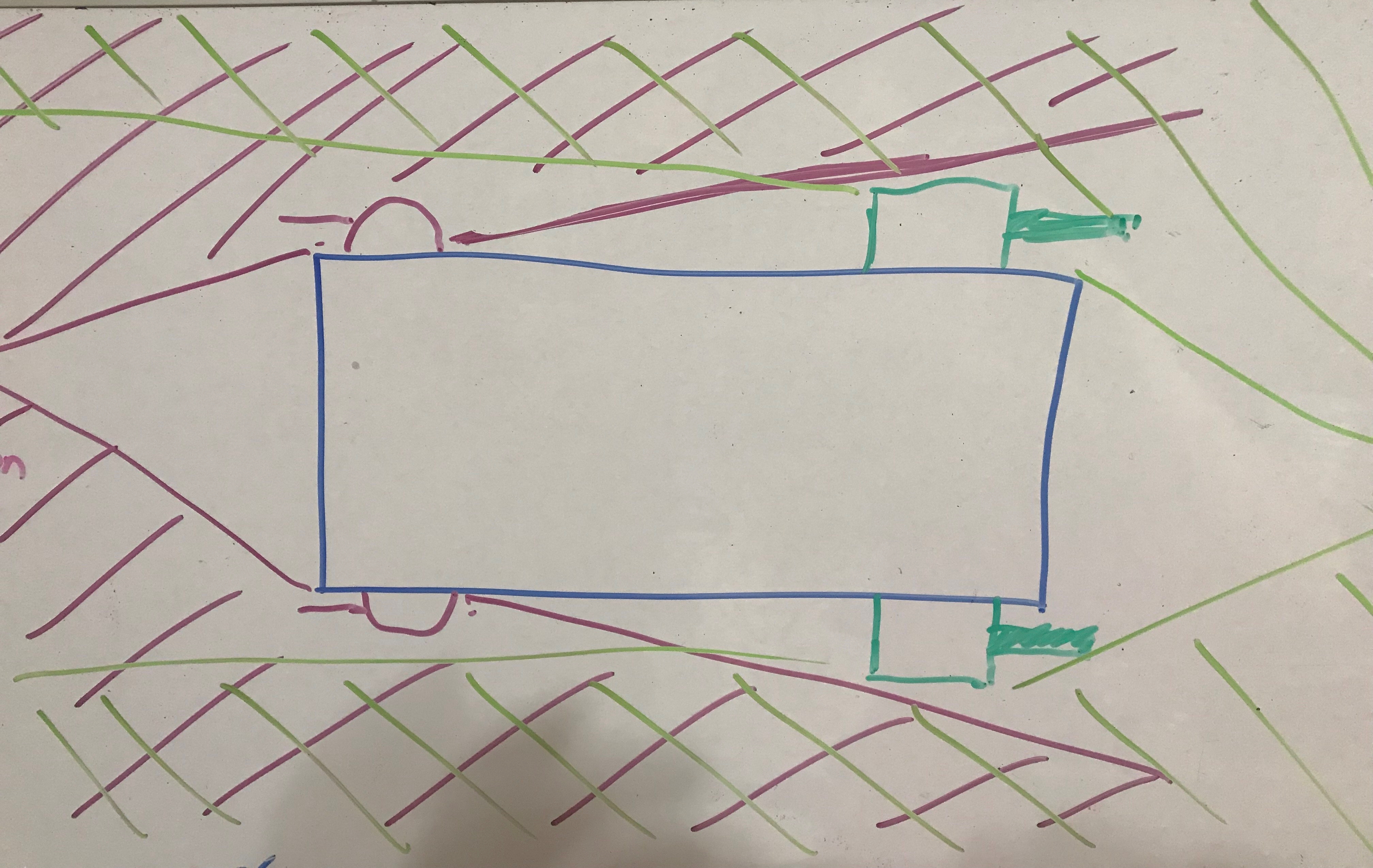(I’d been meaning to get back to this series for quite some time, but never quite managed it. Until now, seeing as a generous reader on the Discord offered to make me a delta-v map for the System, which rather spurred me on to resume the project.)
I/9. Iälessá
Class: Alessán
Orbit (period): 23.17 au (40,737 T-days/111.529 T-years)
Orbit (ecc.): 0.01 (however, orbital inclination is 22° from the ecliptic)
Radius: 16,833 miles
Mass: 1.194 x 1026 kg
Density: 1.44 g/cm3
Cloud-top gravity: 1.11 g
Axial tilt: 27.1°
Rotation period: 2.13 T-days (tide-locked)
Black-body temperature: 54 K
Satellites: 7 close moonlets, ring. 5 major moons. 4 eccentric moons.
A swirled marble of blues pale and dark, Iälessá is the inner of Lumenna’s twin ice giants. Its somewhat unusual coloration is believed to be the result of a combination of factors: its ammonia-rich atmosphere, the unusually high quantity of silicate dust in that same atmosphere (believed to be a product of whatever primordial event was responsible for the unusual inclination of its orbit), the primitive microbial life dwelling in its upper layers, and the unusual states of matter found near its core.
A small number of aerostats dwell in the upper atmosphere of Iälessá, primarily concerning themselves with research into the history and lifeforms of the planet, and its small gas-mining industry. The civilian population outside the major moons primarily dwells here, and across its various moonlets. Outside the Iälessá sub-system itself, though, its libration points with Lumenna contain a large number of polises and other processing facilities, taking advantage of the low-temperature environment.
Meanwhile, the sub-system itself, inasmuch as it consists of a relatively small ice giant with a system of large moons, presents the unusual sight of an astronomical arrangement firmly in gravity’s grip, as everything is tide-locked to everything else!
I/9/a. Saeríändrá
Class: Thiorastan (high-silicate)
Orbit (period): 134,664 miles (0.921 T-days)
Orbit (ecc.): 0.01
Radius: 786 miles
Mass: 4.055 x 1022 kg
Density: 4.798 g/cm3
Surface gravity: 0.17 g
Axial tilt: 4.2°
Rotation period: 0.921 T-days (tide-locked)
Black-body temperature: 54 K
Surface temperature (avg.): 65 K
Atmosphere: Thin (0.1 atm), primarily sulphurous, with heavy ash clouds.
Hydrographic coverage: 0% (other than short-lived cooling glass lakes)
Saeríändrá, the innermost major moon of Iälessá, is an anomalous thiorastan-class moon in many ways, primarily because of the high percentage of silicon and silicate compounds in its makeup, similar to that of its parent planet. It is also anomalously warm, due to the high degree of tidal flexing caused by its proximity to Iälessá, along with frequent close passed by the moonlets with which it is in resonance and its peripatetic moonmoons.
This tidal flexing also drives a highly active geology, including many large volcanoes. It is primarily this volcanic activity that provides Saeríändrá with its thin atmosphere and the thick high-altitude ash clouds which retain the moon’s heat, although the moon’s mass is entirely insufficient to retain its atmosphere, leaving a long pseudo-cometary tail trailing it in its orbit.
CAUTION: Travelers to or near Saeríändrá should be advised that near-Saeríändrá space to trailing of the moon is rich in particulate manner which may score hulls and damage delicate equipment. Avoidance of this zone is recommended.
Saeríändrá’s volcanoes are rare examples of vitreovolcanism, due to its silicon-rich crust; the lava they spew onto the moon’s surface takes the form of a variety of silicate glasses. Ongoing volcanic activity over millennia has resculpted the majority of Saeríändrá’s surface into layers of sculpted glass, from the milky mountains, ancient frozen eruptions etched by wind-driven ash, to the lowland glasslakes, swirled in many colors from impurities within, where glass lava has settled to its natural level before freezing in place.
Saeríändrá is a provider of fissionables to Cinquané and other parts of the outer system, via the Empire Nucleonics, ICC mining station in the north extracting thorium and uranium salts from the brown-green glasslakes of the area. Habitation is concentrated in the southern hemisphere, which houses a large number of thriving galari colonies, along with the famed Crystal Lake Dome resort.
I/9/b. Cinquané Avincta
Class: Eugalínic
Orbit (period): 185,163 miles (1.49 T-days)
Orbit (ecc.): 0.12
Radius: 1,227 miles
Mass: 1.123 x 1023 kg
Density: 3.47 g/cm3
Surface gravity: 0.2 g
Axial tilt: 3.1°
Rotation period: 1.49 T-days (tide-locked)
Black-body temperature: 54 K
Surface temperature (avg.): 37 K
Atmosphere: None.
Hydrographic coverage: 0%
A moon trapped in the quiescent phase of the galínic cycle by its lower mass and lack of atmospheric retention, Cinquané Avincta is a frozen world, its surfaces dominated by ice, carbon dunes, hydrocarbon tars, and tholins. As its slightly higher density indicates, pockets of heavier elements are present within its mass, and as such, it serves principally as a mining colony of the Cinquané Commonwealth, of which it is a territorial annex.
However, its surface is also heavily and repeatedly cracked by the high tidal forces to which it is subjected, and thus riven with mazes of chasms and other similar formations. As such, it has a thriving secondary tourist industry in extreme sports, including vacuum spelunking, bridge diving, and high-velocity flight in and among the narrows.
(Let us skip discretely past the tertiary industry of scavenging the remains of extreme sportssophs from the bottom of said chasms.)
I/9/c. Cinquané
Class: Galínilacustric
Orbit (period): 235,662 miles (2.13 T-days)
Orbit (ecc.): 0.09
Radius: 2,850 miles
Mass: 1.248 x 1024 kg
Density: 3.09 g/cm3
Surface gravity: 0.4 g
Axial tilt: 5.4°
Rotation period: 2.13 T-days (tide-locked)
Black-body temperature: 54 K
Surface temperature (avg.): 58 K
Atmosphere: 2.16 atm; primarily nitrogen-methane.
Hydrographic coverage: 70% (primarily ethane, with misc. hydrocarbon admixture)
Galíné may be the archetypal example of the galínic planetary classes, but Cinquané was the first. A world of ice, carbon dunes, and ethane oceans lapping at tholin beaches, all beneath a smoggy red-orange methane sky, Cinquané began as a roughneck industrial colony producing hydrocarbon-based products for the ecopoesis of Talentar and space industry elsewhere in the system, and grew from those roots into the homeworld of the modern Cinquané Commonwealth, the largest and most prosperous polity of the outer system, however Inlétanós’s Ring Imperium might contest the claim. Over three billion cold-loving sophs dwell in the domes scattered across Cinquané’s dusty plains and shores, along with the open ciseflish settlements, the largest being the planetary capital, Yíhanad, and the jack city of Newfalls.
Both Biolith Chemical Produces, ICC, and Industrial Liquids, ICC, maintain large extraction and bactry facilities here, clustered around the industrial cities along the shore of the southern polar ocean.
Other notable planetographic features include the Hump, the permanent 330′ high tide beneath the noon pole (here defined as the planetward synchronous pole, rather than the sunward one).
I/9/d. Cinquané Tevinté
Class: Eugalínic
Orbit (period): 370,326 miles (4.10 T-days)
Orbit (ecc.): 0.07
Radius: 1,663 miles
Mass: 2.126 x 1023 kg
Density: 2.65 g/cm3
Surface gravity: 0.2 g
Axial tilt: 1.3°
Rotation period: 4.10 T-days (tide-locked)
Black-body temperature: 54 K
Surface temperature (avg.): 35 K
Atmosphere: None.
Hydrographic coverage: 0%
Similar in most ways to Cinquané Avincta, but lacking the heavier elements, Cinquané Tevinté is also a territorial annex of the Cinquané Commonwealth, serving as a de facto suburb colony for those preferring greater privacy.
One pseudo-island (i.e., area of raised ground within a tar lake) on Cinquané Tevinté holds a mothballed manufacturing facility, that in which Ring Dynamics, ICC produced the first stargate hulls before the construction of the modern standardized weylforge, and another holds a naval depot for the IN’s outer-system picket.
I/9/e. Alétel
Class:
Orbit (period): 420,825 miles (5.07 T-days)
Orbit (ecc.): 0.13
Radius: 2,336 miles
Mass: 5.154 x 103 kg
Density: 2.32 g/cm3
Surface gravity: 0.24 g
Axial tilt: 4.6°
Rotation period: 5.07 T-days (tide-locked)
Black-body temperature: 54 K
Surface temperature (avg.): 52 K
Atmosphere: 0.16 atm; nitrogen-methane.
Hydrographic coverage: 0%
Another otherwise undistinguished iceball, the moon is perhaps most famous for housing Uncertainty Dome, Bright Shadow, ICC’s chief domestic tanglebit manufacturing facility, and, historically, for the Alétel Equatorial Collider.
Ringing the moon’s equator, the Equatorial Collider, at 14,675 miles in circumference, was the largest particle accelerator ever constructed until the much later advent of the Déirae Collider, and enabled new and profound discoveries in high-energy physics.



